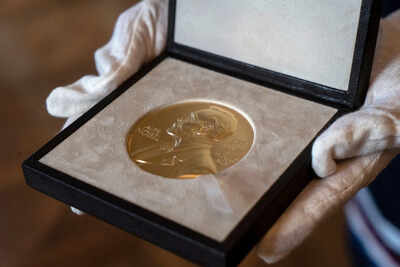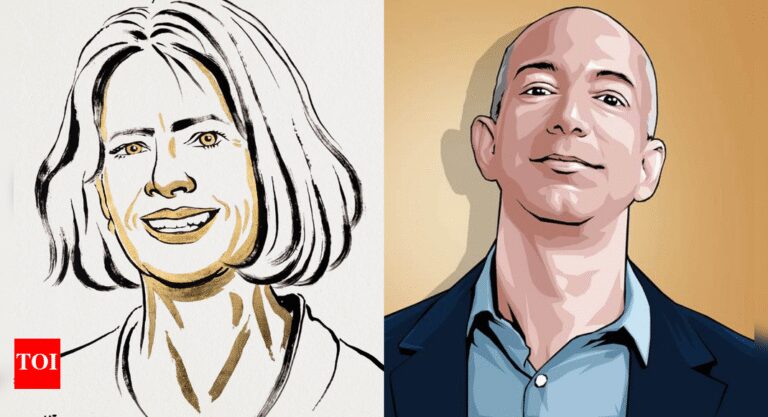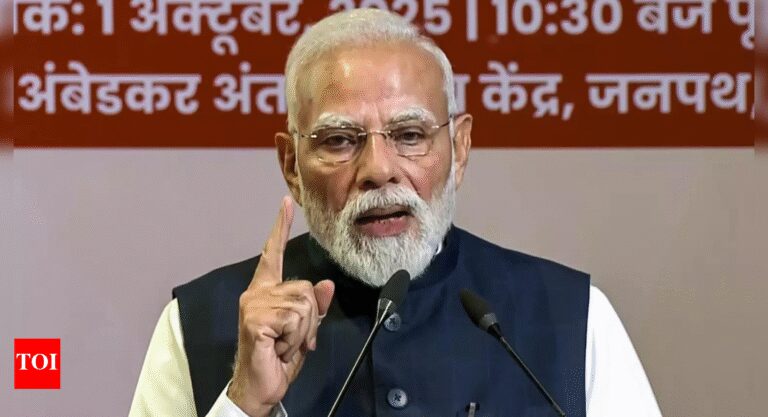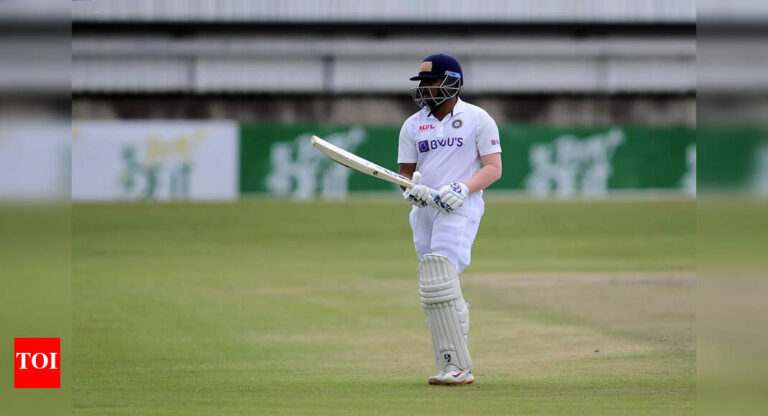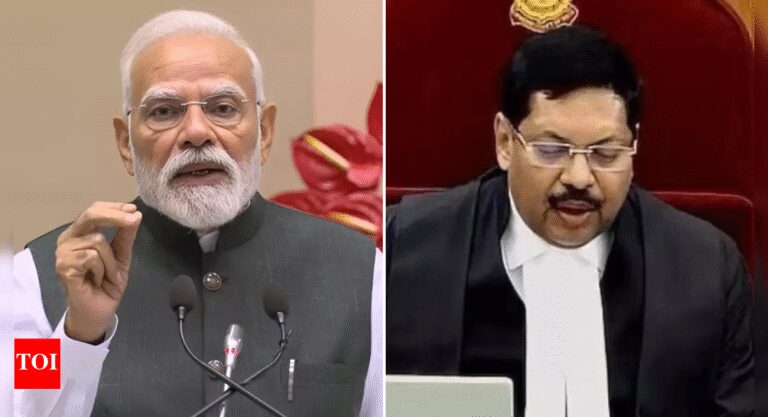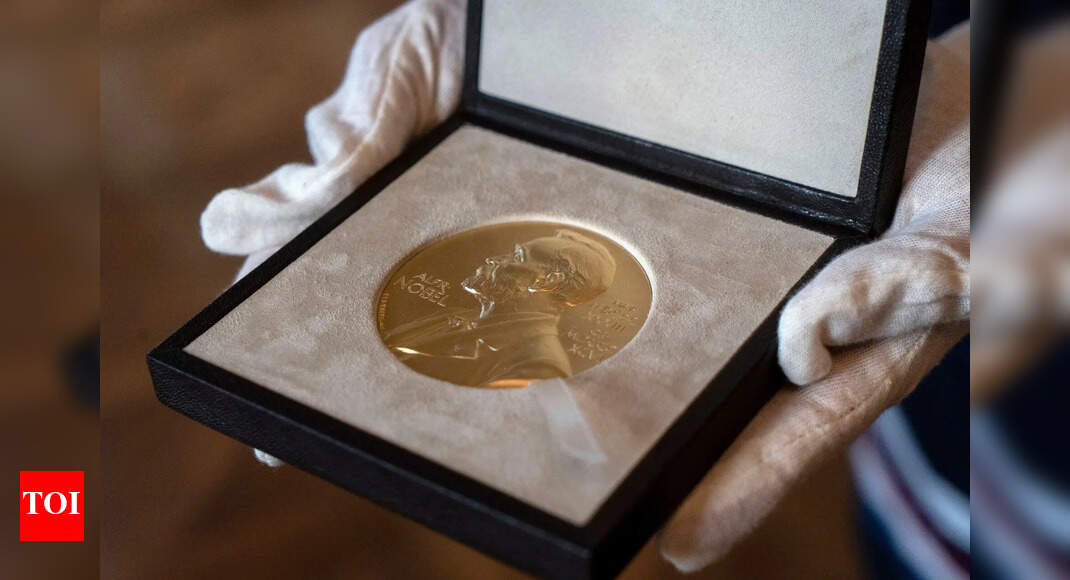
The Nobel announcements for 2025 are under way. The Nobel Prize in Physiology or Medicine has gone to Mary E. Brunkow, Fred Ramsdell and Shimon Sakaguchi for discoveries that explain how the immune system restrains itself — research on peripheral immune tolerance that helped define regulatory T-cells and opened pathways in autoimmune care and cancer therapy. The award, unveiled by the Nobel Assembly in Stockholm, kicks off a week in which the rest of the prizes will be named. With that global canvas in view, it is a fitting moment to revisit India’s century-long presence at the Nobels: What they won for and when, where they studied, and how their careers unfolded.
Rabindranath Tagore : Literature (1913)
Tagore won the Nobel Prize in Literature in 1913 for Gitanjali, a body of verse whose spare lyricism and philosophical clarity carried Bengali poetry to a world audience, making him the first Asian laureate.
Educational background
Largely home-schooled in Calcutta under an exacting family regime, Tagore briefly read law at University College London before abandoning formal study, a decision that liberated him to write, translate and compose.
Career graph
Tagore was that rare, many-talented figure who moved with ease from verse to stage and songs, from classroom to canvas. He wrote and composed thousands of songs including the melodies later adopted as India’s “Jana Gana Mana” and Bangladesh’s “Amar Shonar Bangla.” As a novelist he produced a string of modern classics—Chokher Bali (1903), Gora (1910) and Ghare-Baire (The Home and the World, 1916)—that tested questions of identity, nationalism and gender with an unsentimental eye. His short stories, among them “Kabuliwala” and “The Postmaster,” more or less invented the Bengali short form as a vehicle for quiet social observation. On stage he wrote and staged plays from the luminous allegory Dak Ghar (The Post Office, 1912) to the fiercer Raktakarabi (Red Oleanders, 1924), while his dance-dramas such as Chitrangada and Shyama blended poetry, music and movement into a distinctly Tagorean theatre. Late in life he turned to painting—bold lines, dark inks, unsettling faces—and exhibited across Europe, proof that his restlessness was not a phase but a method. Alongside the art ran institution-building: at Santiniketan he founded Visva-Bharati, a university that refused the wall between craft and scholarship, which is perhaps the clearest summation of his career—an artist-educator intent on widening the circle of what learning, and literature, could include.
C. V. Raman : Physics (1930)
Raman received the 1930 Nobel Prize in Physics for explaining why scattered light changes frequency — the Raman Effect — a discovery that revolutionised spectroscopy and materials analysis.
Educational background
Raman studied physics at Presidency College, University of Madras, finishing BA and MA degrees with distinction; his earliest papers appeared while he was still a student, a hint of the experimental curiosity that defined his career.
Career graph
After a stint in the Indian Finance Service, Raman moved to the Indian Association for the Cultivation of Science in Calcutta, then to the Indian Institute of Science in Bengaluru, and later founded the Raman Research Institute. His enduring work, beyond the eponymous effect, was institution-building that anchored Indian physics in global discourse.
Har Gobind Khorana: Physiology or Medicine (1968)
Khorana shared the 1968 Nobel in Physiology or Medicine with Marshall Nirenberg and Robert Holley for cracking how nucleotide sequences specify amino acids — seminal work on the genetic code, later complemented by his laboratory’s chemical synthesis of genes.
Educational background
Khorana earned BSc and MSc degrees at the University of the Punjab (Lahore), completed a PhD at the University of Liverpool and trained further at ETH Zürich, a sequence that shifted his gaze from classical chemistry to the chemistry of life.
Career graph
Khorana worked in Vancouver and Madison before settling at MIT, where his group’s strand-by-strand gene synthesis reshaped molecular biology. Notable publications include his genetic-code papers and later work on membrane proteins and photoreceptors.
Mother Teresa: Peace (1979)
Mother Teresa received the 1979 Nobel Peace Prize “for work undertaken in the struggle to overcome poverty and distress”, a recognition of decades of care for the destitute through the Missionaries of Charity.
Educational background
Mother Teresa’s formation was vocational rather than academic: Training with the Sisters of Loreto in Dublin preceded her move to India, where she later became a citizen.
Career graph
In Kolkata Mother Teresa built an order that spread worldwide, focusing on hospice care, orphaned children and the abandoned; notable milestones include the founding of the Missionaries of Charity and a Nobel lecture that reframed peace as the dignity of the unwanted.
Subrahmanyan Chandrasekhar: Physics (1983)
Chandrasekhar shared the 1983 Nobel Prize in Physics with William Fowler for theoretical work on the structure and evolution of stars — including the Chandrasekhar limit, which dictates the fate of white dwarfs.
Educational background
Chandrasekhar studied at Presidency College in Madras before doctoral work at Trinity College, Cambridge, where early arguments about stellar collapse set the tone for a career of exacting mathematics.
Career graph
Chandrasekhar was the Morton D. Hull Distinguished Service Professor at the University of Chicago, where he spent nearly six decades shaping modern astrophysics, dividing his time between the campus and the university’s Yerkes Observatory in Wisconsin. His notable works range from Principles of Stellar Dynamics and Radiative Transfer to Hydrodynamic and Hydromagnetic Stability, Ellipsoidal Figures of Equilibrium, and The Mathematical Theory of Black Holes—a bookshelf that, along with the Chandrasekhar limit, became the grammar of stellar structure and collapse. His prose—taut, spare, rigorous—turned into a style guide for astrophysics.
Amartya Sen : Economic Sciences (1998)
Sen won the 1998 Economics Prize for reshaping welfare economics and social choice, reframing poverty and famine through the “capabilities” lens that migrated from theory into policy.
Educational background
Schooled at Santiniketan, Sen studied economics at Presidency College, Kolkata, and completed a PhD at Cambridge, sketching an academic itinerary that would later oscillate between India, the UK and the US.
Career graph
Amartya Sen is the Thomas W. Lamont University Professor and Professor of Economics and Philosophy at Harvard University, a post he continues to hold while writing and lecturing on welfare, democracy and development. Before Harvard, he cut his academic teeth in India—first as a young department head at Jadavpur University, then at the Delhi School of Economics (DSE, 1963–71). His notable works include Poverty and Famines (1981), which reframed famine analysis through entitlements; Development as Freedom (1999), which put capabilities at the centre of policy; The Argumentative Indian (2005), an essay collection that traced India’s traditions of public reasoning and helped cement his role as a public intellectual beyond economics; and The Idea of Justice (2009), a comparative theory that pushed debates on fairness out of the seminar room and into public life.
V. S. Naipaul: Literature (2001)
Naipaul received the 2001 Nobel Prize in Literature for a body of work that united “perceptive narrative and incorruptible scrutiny” across the post-colonial world.
Educational background
Born in Trinidad to an Indian family, Naipul read English at University College, Oxford, on a scholarship — training that honed a controlled, lapidary style even as he wrote about displacement.
Career graph
From the BBC’s Caribbean Voices to global renown, Naipul’s notable works — A House for Mr Biswas, In a Free State, A Bend in the River and the India trilogy — turned the diaspora condition into literature that could be both devastating and precise.
Venkatraman Ramakrishnan: Chemistry (2009)
Ramakrishnan shared the 2009 Chemistry Nobel with Ada Yonath and Thomas Steitz for determining the ribosome’s atomic structure — a map of life’s protein factory that reshaped antibiotics research.
Educational background
Ramakrishnan read physics at the Faculty of Science, Maharaja Sayajirao University of Baroda in Vadodara, took a PhD in physics at Ohio University, then retrained in biology at UC San Diego — an audacious switch from theory to structure.
Career graph
Ramakrishnan is a Group Leader at Cambridge’s MRC Laboratory of Molecular Biology and a former President of the Royal Society (2015–20). At the MRC Laboratory of Molecular Biology in Cambridge, his team’s crystallographic work produced the images that won the prize. Later on, as President of the Royal Society, he also wrote Gene Machine, a memoir of science done at close quarters.
Kailash Satyarthi: Peace (2014)
Satyarthi shared the 2014 Peace Prize with Malala Yousafzai for a lifetime of organising against child labour and for the right to education — activism that moved governments and supply chains.
Educational background
An electrical engineer by training from SATI Vidisha, Satyarthi added labour-studies credentials as his work shifted from machines to children’s rights.
Career graph
Satyarthi founded Bachpan Bachao Andolan, led the Global March Against Child Labour, and helped pioneer Rugmark/GoodWeave certification.
Abhijit Banerjee: Economic Sciences (2019)
Banerjee shared the 2019 Economics Prize with Esther Duflo and Michael Kremer for mainstreaming randomised evaluations in development economics — an experimental approach to alleviating poverty that changed how programmes are designed.
Educational background
Banerjee pursued economics at Presidency College, Kolkata, earned a master’s at Jawaharlal Nehru University and completed a PhD at Harvard — a pipeline that mixed Indian grounding with American doctoral training.
Career graph
Banerjee is the Ford Foundation International Professor of Economics at MIT and co-founder (with Esther Duflo) of the Abdul Latif Jameel Poverty Action Lab (J-PAL), a global research network based at MIT that works with governments and NGOs to design, test and scale anti-poverty programmes using randomised evaluations. J-PAL’s model spans three pillars—rigorous field experiments, evidence synthesis, and policy partnerships—so that successful interventions (from education nudges to health insurance and microcredit designs) move from trials to public policy. Banerjee’s notable works include Poor Economics (with Duflo), which recast the development debate around evidence rather than ideology, and a large body of RCT-driven studies across schooling, health, microfinance and social protection.

